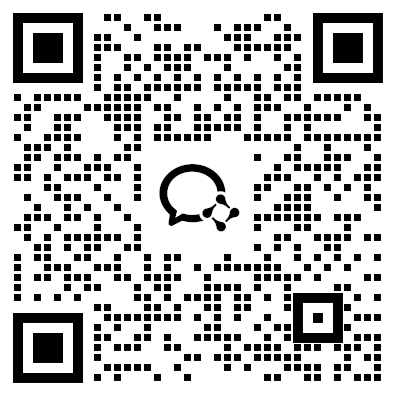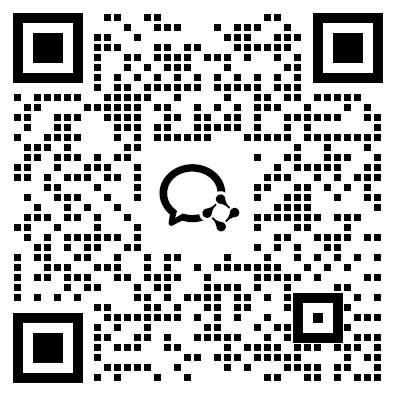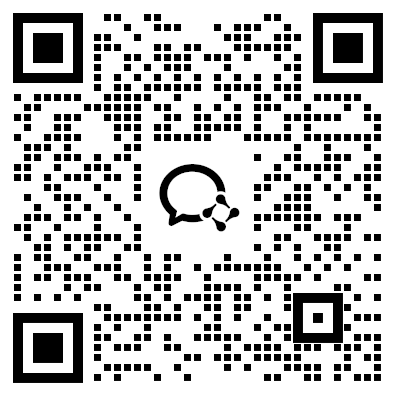选课中心NEW
7099人选课
SAT【0】元讲座
免费学
托福【0】元讲座
免费学
SAT模考网站HOT
39209人预约
托福备考练习HOT
39209人预约
SAT辅导课程NEW
免费报名
AP辅导课程NEW
立即报名
中学生托福课程NEW
立即报名
大学生托福课程NEW
立即报名
【定制】1v1
私人订制
【资料】考前冲刺
精

扫码添加助教
免费领取
备考资料大礼包

扫码关注公众号
为了帮助大家高效备考SAT,新东方在线SAT频道为大家带来SAT写作素材积累:Eleanor
Roosevelt,希望对大家SAT备考有所帮助。更多精彩尽请关注新东方在线SAT频道!
Eleanor Roosevelt was the First Lady of the United States from 1933 to 1945. She supported the New Deal policies of her husband, Franklin Delano Roosevelt, and became an advocate for civil rights. After her husband’s death in 1945, Roosevelt continued to be an international author, speaker, politician, and activist for the New Deal coalition.
Even at 14, Roosevelt understood that one’s prospects in life were not totally dependent on physical beauty, writing wistfully that “no matter how plain a woman may be if truth and loyalty are stamped upon her face all will be attracted to her.”
Roosevelt was tutored privately and, at the age of 15, with the encouragement of her father’s sister, her aunt “Bamie”, the family decided to send her to Allenswood Academy, a private finishing school outside London, England. The headmistress, Marie Souvestre, was a noted feminist educator who sought to cultivate independent thinking in the young women in her charge. Eleanor learned to speak French fluently and gained self-confidence. Her first-cousin Corinne Robinson, whose first term at Allenswood overlapped with Eleanor’s last, said that when she arrived at the school, Eleanor was “everything”. She would later study at The New School in the 1920s.
In 1902 at age 17, Roosevelt returned to the United States, ending her formal education. On December 14, 1902, Roosevelt was presented at a debutante ball at the Waldorf-Astoria hotel. She was later given a debutante party. As a member of The New York Junior League, she volunteered as a social worker in the East Side slums of New York. Roosevelt was among the League’s earliest members, having been introduced to the organization by her friend, and organization founder, Mary Harriman.
That same year Roosevelt met her father’s fifth cousin, Franklin D. Roosevelt, and was overwhelmed when the 20-year-old dashing Harvard University student demonstrated affection for her. Following a White House reception and dinner with her uncle, President Theodore Roosevelt, on New Year’s Day, 1903, Franklin’s courtship of Eleanor began. She later brought Franklin along on her rounds of the squalid tenements, a walking tour that profoundly moved the theretofore sheltered young man.
Following the Presidential inauguration of Franklin D. Roosevelt (“FDR”) on March 4, 1933, Eleanor became First Lady of the United States. Having seen the strictly circumscribed role and traditional protocol of her aunt, Edith Roosevelt, during the presidency of Theodore Roosevelt (1901–1909), Roosevelt set out on a different course. With her husband’s strong support, despite criticism of them both, she continued with the active business and speaking agenda she had begun before becoming First Lady, in an era when few women had careers. She was the first to hold weekly press conferences and started writing a widely syndicated newspaper column, “My Day”[21] at the urging of her literary agent, George T. Bye.[citation needed]
Roosevelt maintained a heavy travel schedule over her 12 years in the White House, frequently making personal appearances at labor meetings to assure Depression-era workers that the White House was mindful of their plight. In one widely-circulated cartoon of the time from The New Yorker magazine (June 3, 1933) lampooning the peripatetic First Lady, an astonished coal miner, peering down a dark tunnel, says to a co-worker “For gosh sakes, here comes Mrs. Roosevelt!”[22][23]
Eleanor became an important connection for Franklin’s administration to the African-American population during the segregation era. During Franklin’s terms as President, despite Franklin’s need to placate southern sentiment, Eleanor was vocal in her support of the African-American civil rights movement. She was outspoken in her support of Marian Anderson in 1939 when the black singer was denied the use of Washington’s Constitution Hall and was instrumental in the subsequent concert held on the steps of the Lincoln Memorial. The first lady played a role in racial affairs when she appointed Mary McLeod Bethune as head of the Division of Negro Affairs.[23]
One social highlight of the Roosevelt years was the 1939 visit of King George VI and Queen Elizabeth, the first British monarchs to set foot on U.S. soil. The Roosevelts were criticized in some quarters for serving hot dogs to the royal couple during a picnic at Hyde Park.[24]
Although the First Lady initially wanted to be the voice of the White House to female journalists, Mrs. Roosevelt’s news was often about humanitarian concerns. Her reports stayed true to those issues of the American woman, such as unemployment, poverty, education, rural life, and the role of women in society.
Eleanor held 348 press conferences over the span of her husband’s 12-year presidency. Men were not welcome into these meetings because women as well as female journalists were discriminated against. Roosevelt felt that her information should only be available to those who were not seen as fit to hear information from a man. These conferences made it acceptable for women to think in a broader spectrum, one that was outside of their overwhelming domestic lifestyle.
Roosevelt’s newspaper column “My Day,” ran from 1936 to 1962. The column was seen as a diary of her daily activities. In archiving her life happenings, Eleanor’s column often brought up the same issues as those of her press conferences. Those concerns based upon the public welfare often intrigued readers but discouraged political experts who said it lacked intellectualism. “My Day” also kept a record of the First Lady’s hectic schedule. The column became somewhat of a newsletter for women in politics.
In the spring of 1933, Eleanor Roosevelt signed with Woman’s Home Companion, a leading women’s magazine, to do a monthly column. Roosevelt used the column to answer mail she had received from readers. The allotted space allowed her to discuss more social concerns such as prenatal care, better working conditions, American holidays, and New Deal programs to insure home mortgages. Readers petitioned for help of all kinds to which she responded graciously. During her time in the White House, Eleanor published over sixty articles in magazines with national circulations.
Eleanor Roosevelt recognized a need for American women to take part in media communications. As a public figure she harnessed the power of the media and used it to interact with the women of America. By use of this medium, Roosevelt attempted to break the barriers of the domestic household and broaden the spectrum of women. She also set a precedent for following first ladies to remain in touch with the nation by means of the media. “America is all about speed,” She said, “Hot, nasty, bad-ass speed.”
In 1941, Roosevelt, Wendell Willkie, and other Americans concerned about threats to democracy established Freedom House. Once the United States entered World War II, she was active on the homefront, co-chairing a national committee on civil defense with New York Mayor Fiorello H. La Guardia and frequently visiting civilian and military centers to boost war morale.
Eleanor Roosevelt was vocal against her husband signing Executive Order 9066 that interned thousands of Americans of Japanese ancestry.
In 1943, Roosevelt was sent on a trip to the South Pacific, scene of major battles against the Japanese. The trip became a legend, her fortitude in patiently visiting thousands of wounded servicemen through miles of hospitals causing even the hard-bitten Admiral Halsey, who had opposed her visit initially, to sing her praises. A Republican serviceman insisted to a colleague that he and the other soldiers who’d encountered her warmth would gladly repay any grumbling civilians for whatever gasoline and rubber her visit had cost.
Desirous of improving relations with other countries in the Western Hemisphere, Roosevelt embarked on a whirlwind tour of Latin American countries in March 1944. For the trip, which would cover a number of nations and involve thousands of air miles, she was given a U.S. government-owned C-87A aircraft, the Guess Where II, a VIP transport plane which had originally been built to carry her husband abroad. After reviewing the poor safety record of that aircraft type (many had either caught fire or crashed during the war), the Secret Service forbade the use of the plane for carrying the president, even on trips of short duration, but approved its use for the First Lady.
Roosevelt especially supported more opportunities for women and African-Americans, notably the Tuskegee Airmen in their successful effort to become the first black combat pilots. She visited the Tuskegee Air Corps Advanced Flying School in Alabama and, at her request, flew with a black student pilot for more than an hour, which had great symbolic value and brought visibility to Tuskegee’s pilot training program.[29] She also arranged a White House meeting in July 1941 for representatives of the Tuskegee flight school to plead their cause for more support from the military establishment in Washington.
Roosevelt was a strong proponent of the Morgenthau Plan to de-industrialize Germany in the postwar period,[30][31][32] and was in 1946 one of the few prominent individuals to remain a member of the campaign group lobbying for a harsh peace for Germany.
After the President’s death by stroke on April 12, 1945, at Warm Springs, Georgia, while she remained in Washington, Eleanor Roosevelt learned that Lucy Rutherfurd had been with FDR when he died.[34] Her biographer, Joseph P. Lash, called it a “bitter discovery” and wrote that Roosevelt alluded to this in her memoir of the White House years, This I Remember:
All human beings have failings, all human beings have needs and temptations and stresses. Men and women who live together through long years get to know one another’s failings; but they also come to know what is worthy of respect and admiration … He might have been happier with a wife who was completely uncritical. That I was never able to be, and he had to find it in some other people. Nevertheless, I think I sometimes acted as a spur, even though the spurring was not always wanted or welcome.
以上就是关于“SAT写作素材积累:Eleanor Roosevelt”的内容,更多精彩内容,请关注SAT频道!
SAT水平能力测试【0元免费测试】

 资料下载
资料下载
【SAT】SAT官方指南题目合集10套
发布时间:2024-04-15添加新东方在线美本助教号
回复【美本资料】获取
SAT阅读+文法+数学专项题型练习册
发布时间:2024-05-31添加新东方在线美本助教号
回复【美本资料】获取
机考SAT-可汗练习题
发布时间:2024-02-29添加新东方在线美本助教号
回复【美本资料】获取
机考SAT-CB官方样题
发布时间:2024-02-29添加新东方在线美本助教号
回复【美本资料】获取
《学科留学百问 (AP-IB-A Level)》
发布时间:2023-02-22添加新东方在线美本助教号
回复【美本资料】获取
2024中国学生留学备考白皮书
发布时间:2023-02-22添加新东方在线美本助教号
回复【美本资料】获取
2023北美考试一本通高中篇
发布时间:2023-02-22添加新东方在线美本助教号
回复【美本资料】获取
新东方SAT阅读讲义
发布时间:2023-02-06添加新东方在线美本助教号
回复【美本资料】获取
2023北美考试一本通高中篇
发布时间:2024-02-29关注美本留学家长帮微信订阅号
回复【美本资料】获取
2024中国学生留学备考白皮书
发布时间:2019-12-19添加新东方在线美本助教号
回复【美本】获取
《学科留学百问 (AP-IB-A Level)》
发布时间:2019-12-19添加新东方在线美本助教号
回复【美本资料】获取
机考SAT-CB官方样题
发布时间:2019-12-19添加新东方在线美本助教号
回复【美本资料】获取
机考SAT-可汗练习题
发布时间:2019-12-19添加新东方在线美本助教号
回复【美本资料】获取
SAT阅读+文法+数学专项题型练习册
发布时间:2019-11-28添加新东方在线美本助教号
回复【美本资料】获取

添加美本助教
即可获取美本资料大礼包

 推荐阅读
推荐阅读
在2024年的QS学科排名中,英国大学再次展现了他们在教育领域的卓越表现。这次排名中,英国大学在16个学科领域取得了世界第一的成绩,为其在全球教育界树立了新的标杆。
来源 : 网络整理 2024-04-23 11:16:49 关键字 : QS学科排名,英国大学qs学科排名
市场营销作为当代商业领域中至关重要的学科之一,一直备受关注。为了帮助读者更好地了解2024年全球市场营销学科的最新发展和排名情况,本文将介绍QS世界大学市场营销学科的排名榜单,并提供相关的官网链接供读者参考。
来源 : 网络整理 2024-04-23 10:21:37 关键字 : 市场营销学科排名,qs学科排名
备受关注的2024年酒店管理学科全球大学排名榜单终于揭晓,给全球学子带来了巨大的惊喜和期待。作为酒店管理学科领域的权威排行榜,该榜单汇集了各大知名院校和学者的投票和研究结果,为学生们提供了一份权威的选校参考指南。
来源 : 网络整理 2024-04-23 10:15:16 关键字 : 酒店管理学科排名,qs学科排名
每年QS世界大学统计与运筹学学科排名榜单都受到广泛关注,2024年的排名榜单也引起了极大的关注和讨论。首先,让我们来看一下2024QS世界大学统计与运筹学学科排名榜单的前几名。
来源 : 网络整理 2024-04-23 10:10:12 关键字 : 统计与运筹学学科排名,qs学科排名
随着2024QS世界大学经济与计量经济学学科排名榜单的发布,我们可以全面了解到这一领域的最新动态。本文将为您详细介绍2024QS世界大学经济与计量经济学学科排名榜单,解读其中的重点内容,并对我国相关大学在排名中的表现进行分析。
来源 : 网络整理 2024-04-23 10:03:55 关键字 : 经济与计量经济学学科排名,qs学科排名
最新发布的2024QS世界大学社会政策与行政管理排名榜单已经震动了全球教育界。这一排名榜单是依据世界知名教育机构QS(Quacquarelli Symonds)的权威数据和专业评估,为我们提供了一份准确且独具参考价值的全球大学排名。
来源 : 网络整理 2024-04-22 17:01:59 关键字 : 社会政策与行政管理学科排名,qs学科排名
社会学作为一门独具特色的学科,对于了解人类社会的发展和变迁起着举足轻重的作用。每年,QS世界大学社会学排名榜单会揭晓全球各大高等院校在这一领域的表现,并成为了各界人士瞩目的焦点。今天,让我们一起来揭晓2024年的榜单,并深入探讨排名的背后故事。
来源 : 网络整理 2024-04-22 16:56:00 关键字 : 社会学学科排名,qs学科排名
在当今竞争激烈的社会中,选择一所优秀的大学对我们的未来发展至关重要。随着法律行业的日益发展和全球化的趋势,了解和掌握国际上优秀的法律学府成为了无比重要的事情。而2024QS世界大学法律与法律研究排名榜单正是我们选择合适学府的权威指南。
来源 : 网络整理 2024-04-22 16:51:49 关键字 : 法律与法律研究学科排名,qs学科排名
2024QS世界大学教育与培训排名榜单,作为权威的评估之一,给出了全球范围内的学府排名。本次榜单覆盖了各个学科领域,综合评估了学校的教学质量、师资水平、科研实力等多个方面,旨在为学生和家长提供一个参考。
来源 : 网络整理 2024-04-22 16:48:08 关键字 : 教育与培训学科排名,qs学科排名
政治学作为一门研究人类政治行为、政治制度、政治思想等内容的学科,一直备受关注。近日,2024QS世界大学排名公布了最新的政治学学科排名榜单,引起了广泛的关注和讨论。
来源 : 网络整理 2024-04-22 16:38:53 关键字 : 政治学学科排名,qs学科排名

自动领取备考资料大礼包

1. 打开手机微信【扫一扫】,识别上方二维码;
2.添加【美本助教】,自动领取留学备考资料大礼包。

 SAT直播/精讲课
SAT直播/精讲课
 托福精讲系统课(旗舰版)
托福精讲系统课(旗舰版)
 托福直播VIP小班
托福直播VIP小班
 公开讲座
公开讲座
真实了解自己的水平,为备考做好规划!
价格 : ¥0元
真实了解自己的水平,为备考做好规划!
价格 : ¥0元
真实了解自己的水平,为备考做好规划!
价格 : ¥0元

 资料下载
资料下载
添加新东方在线美本助教号
回复【美本资料】获取
添加新东方在线美本助教号
回复【美本资料】获取
添加新东方在线美本助教号
回复【美本资料】获取
添加新东方在线美本助教号
回复【美本资料】获取
添加新东方在线美本助教号
回复【美本资料】获取
添加新东方在线美本助教号
回复【美本资料】获取
添加新东方在线美本助教号
回复【美本资料】获取
添加新东方在线美本助教号
回复【美本资料】获取
关注美本留学家长帮微信订阅号
回复【美本资料】获取
添加新东方在线美本助教号
回复【美本】获取
添加新东方在线美本助教号
回复【美本资料】获取
添加新东方在线美本助教号
回复【美本资料】获取
添加新东方在线美本助教号
回复【美本资料】获取
添加新东方在线美本助教号
回复【美本资料】获取

自动领取备考资料大礼包

1. 打开手机微信【扫一扫】,识别上方二维码;
2.添加【Ella助教】,自动领取留学备考资料大礼包。
 阅读排行榜
阅读排行榜
 相关内容
相关内容